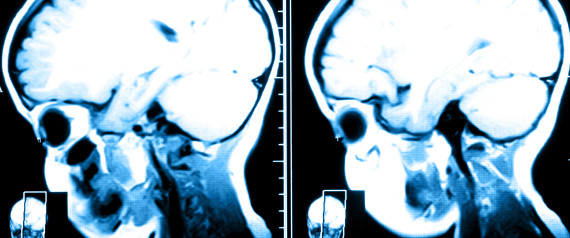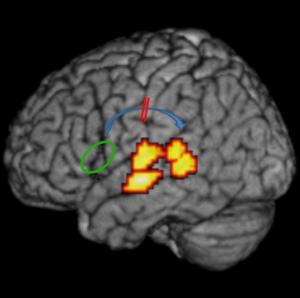
In the film Eternal Sunshine of the Spotless Mind, unhappy lovers undergo an experimental brain treatment to erase all memories of each other from their minds. No such fix exists for real-life couples, but researchers report today in Nature Neuroscience that a targeted medical intervention helps to reduce specific negative memories in patients who are depressed.
“This is one time I would say that science is better than art,” says Karim Nader, a neuroscientist at McGill University in Montreal, Canada, who was not involved in the research. “It’s a very clever study.”
The technique, called electroconvulsive (ECT) or electroshock therapy, induces seizures by passing current into the brain through electrode pads placed on the scalp. Despite its sometimes negative reputation, ECT is an effective last-resort treatment for severe depression, and is used today in combination with anaesthesia and muscle relaxants.
Marijn Kroes, a neuroscientist at Radboud University Nijmegen in the Netherlands, and his colleagues found that by strategically timing ECT bursts, they could target and disrupt patients’ memory of a disturbing episode.
A matter of time
The strategy relies on a theory called memory reconsolidation, which proposes that memories are taken out of ‘mental storage’ each time they are accessed and ‘re-written’ over time back onto the brain’s circuits. Results from animal studies and limited evidence in humans suggest that during reconsolidation, memories are vulnerable to alteration or even erasure.
Kroes and his team tested this idea in 42 patients who had been prescribed ECT for severe clinical depression. In an initial session, the researchers showed two disturbing slide-show narratives: one depicting a car accident, and the other a physical assault.
The team later prompted patients to recall only one of the stories by replaying part of that slide show. Immediately afterwards, when the reactivated memory is thought to be vulnerable, the patients received electroconvulsive therapy.
One day later, when given a multiple-choice memory test, patients were significantly worse at remembering details from the reactivated story, performing near chance. Patients’ memory of the other story, however, remained largely unscathed. But when researchers administered the memory test 90 minutes after treatment, patients showed no differences in their ability to recall the two stories. This suggests that the therapy blocked the time-dependent process of reconsolidation, rather than causing sudden memory loss.
“This provides very strong and compelling evidence that memories in the human brain undergo reconsolidation, and that a window of opportunity exists to treat bad memories,” says Daniela Schiller, a neuroscientist at Mount Sinai Hospital in New York who also studies memory reconsolidation.
Thinking ahead
Schiller says more work is needed to establish how long the ECT effects last, and whether the technique works as effectively on older or more complex memories from real-life experiences, says Schiller.
Kroes adds that ECT may not be the best option for most patients, but says that these results could guide the development of less invasive interventions that target memory reconsolidation. Eventually, he says, the idea could be extended to memories involved in post-traumatic stress disorder, addiction and obsessive-compulsive disorder.
“The ability to permanently alter these types of memories might lead to novel, better treatments,” says Kroes.
Source: huffington post









 Dyslexia, the learning disability that makes reading and processing speech a challenge, may result from problems with brain connectivity, a new study suggests.
Dyslexia, the learning disability that makes reading and processing speech a challenge, may result from problems with brain connectivity, a new study suggests.